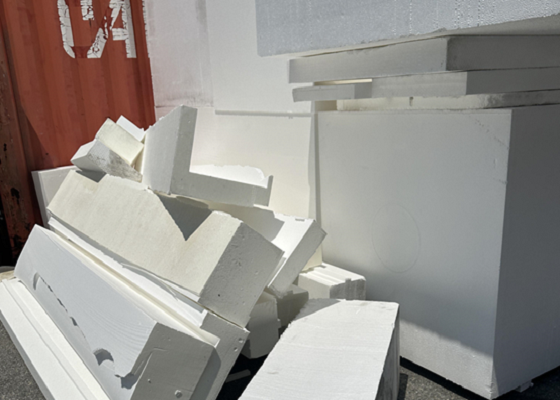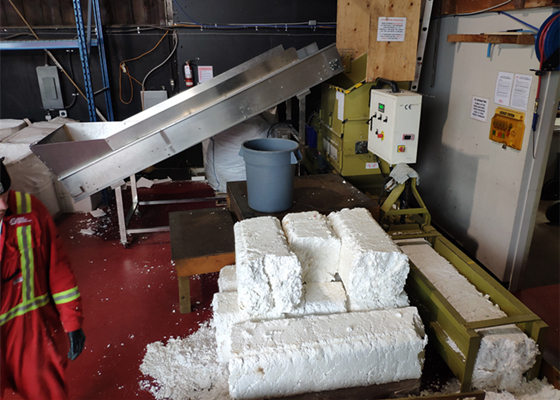The construction industry will create a closed economic loop in Canada with the styrofoam compactor - denying in the landfills
The thermal insulation function of Styrofoam is one of the important properties of this material, so it is often used to make insulation boards for houses and is a material widely used in the construction industry. In Canada, a man once wanted to use discarded styrofoam to make an insulation layer for his house to help him survive the cold winter. Obtained styrofoam plastic from Raven Recycling Company. The recycling center will compress the collected styrofoam into a 50:1 ratio. The resident said he expected to save a lot on the cost of heating his home this winter after insulating his house with a thick layer of compressed styrofoam plastic.
Tests have shown that styrofoam recycled material has almost the same insulation value as new foam insulation at a fraction of the cost. This is why we have been advocating for the recycling of insulation waste generated by the construction industry, which can save the manufacturing of raw materials, save manufacturing costs and, most importantly, prevent styrofoam waste from filling local landfills.

In recent years, styrofoam recycling related activities have been continuously carried out in Canada. In the related recycling activities of some small, medium and large enterprises, we can see that they are using styrofoam recycling machines for recycling. There are various types of recycling equipment, different brands, different models, and different powers. However, the main purpose is to compress the discarded styrofoam and then carry out subsequent recycling. If the compression step is omitted, there is no way to recycle it normally.

The styrofoam generally used in the construction industry has a high density. The GREENMAX Styrofoam compactor has a good crushing system, which can break the high-density waste Styrofoam into uniformly sized blocks and then perform high-strength compression. The volume of this compressed styrofoam blocs is reduced to one-fifth of its original size, and is often purchased by factories engaged in the manufacturing industry to produce plastic particles. Currently, this is one of the most important methods of recycling.
